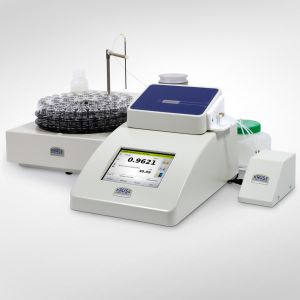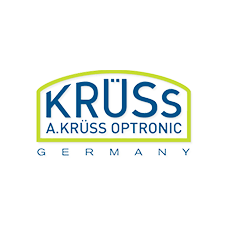02 Jul July 4th Edition – Density of High Viscosity Sample Types
Measuring the Density of High-Viscosity Creams and Ointments
Measuring the density of high-viscosity samples such as creams, ointments and pastes can be a time-consuming process. Pycnometry is a common method used for measuring the density of these types of products, but it can be a laborious process due to the need to temper the samples.
Alternatively, measuring density using oscillating U-tube technology, as found in the A.Krüss Optronic DS7800 Density Meter, will save a great deal of time and effort. This note will give you some helpful tips for the successful measuring of such highly viscous sample types.


Preparation
Make sure you turn on the instrument and set the temperature to 20°C and then check the air values (target = 0.0012 g/cm3. The samples should be loaded into the measuring cell so that no air bubbles form in the measuring cell. The following procedure is recommended:
• Take the 5 mL syringe that comes with the instrument (or equivalent) and pull out the plunger. Using a spatula, fill the syringe with ointment/cream/paste working from the back of the syringe barrel. The sample can be pushed into the front part of the syringe by using a glass rod. Fill with approximately 4 mL of sample. Note – the sample can be degassed using an ultrasonic bath.
• Carefully re-insert the plunger and slowly push the contents into the measuring cell. Check for any air bubbles in the viewing window. If you do see the formation of air bubbles you can place some tubing on the DS7800 outlet port and seal it with a plug to achieve some back pressure and prevent air bubble formation.
• Once the measuring cell is filled, wait for a stable measurement value. This may take a few minutes in some cases because it may take a little longer for viscous samples to achieve temperature equilibrium. Several determinations may be performed by feeding in more sample through the measuring cell.
Cleaning
The measuring cell must be cleaned and dried after each measurement. The cell is suitable for cleaning manually using a syringe as follows:
• Remove the plug from the silicon tube (if appropriate)
• Squirt out the remainder of the sample
• Using the syringe, squirt three 10 ml measuring of the appropriate solvent to rinse out the sample. A warm rinse solvent works best.
• Then rinse with three 10 mL measures of distilled water
• Finally, squirt 5 mL of ethanol through the measuring cell.The integrated air pump will dry the air cell. Once the dry waiting time has elapsed, check the air value (0.0012 g/cm3). You are now ready to run your next sample.
Results

